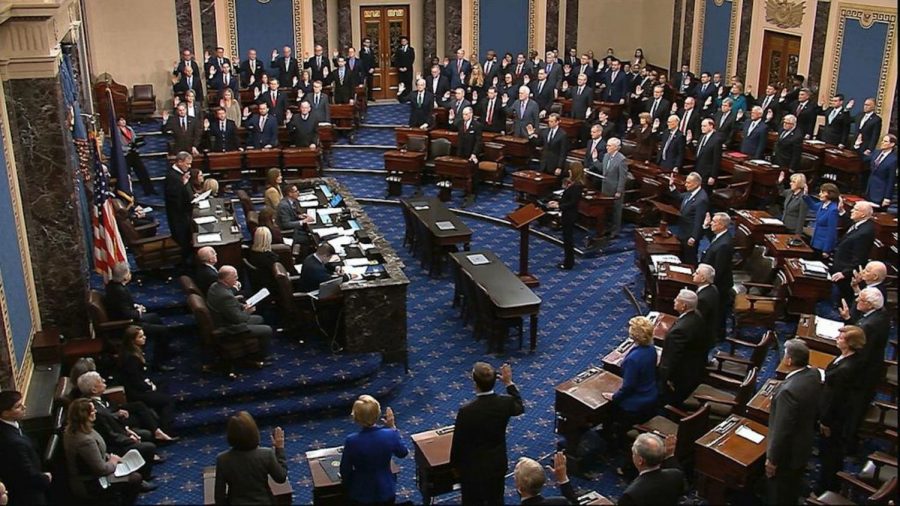President Trump Is Acquitted on Impeachment Charges
February 19, 2020
On February 5, the conclusion was here. The Senate came together to vote for the final decision of whether to convict and remove President Trump from office. There in those minutes, everyone in America, including President Trump himself, froze and awaited the final answer and the result was finally given.
President Trump was acquitted on both impeachment charges. The President had been charged with abuse of power and obstruction of Congress. On abuse of power, the ending result was 48 yay to 52 nays, while on obstruction of Congress, the following result was 47 yay to 53 nays.
Although to truly understand the case, let’s go to the beginning where the Senate Impeachment Trial began. On December 18, 2019, the House of Representatives was tasked with a historical presidential matter.
The point of discussion was President Donald Trump, and whether he should or should not be impeached. After many days and hours of discussions, they chose to impeach Donald Trump on the two articles, but here’s the question… Is it over? Well no.

The Senate was now faced with a new question: do they remove him from office and convict him?
During the month of January, the Senate was holding a trial on this topic, with both sides, the Democrats and Republicans arguing. An example would be the large debate of whether witnesses will be used in the debate. More on that later.
It started on January 21, where there are key things that happened that day. First, Mitch McConnell, the Senate Majority Leader, gave the House managers and President Trump’s defense team an extra day to argue their cases, meaning both sides will be allowed to split their 24-hour presentations over three days.
The initial proposal he circulated gave each side just two days — a time frame that could have pushed testimony into the early morning.
After opening statements, each senator was given 16 hours to question the managers and Trump lawyers. They then had to decide whether they want to consider new evidence at all. If a majority of senators agree to do so, the managers and prosecutors will be allowed to propose and argue for specific witnesses or documents — each of which would require another vote. If the Senate allows either the managers or Mr. Trump’s lawyers to subpoena witnesses, those witnesses would first have to be deposed before being allowed to testify.
When discussing the witness controversy, new evidence was admitted during the trial, where the question of “Will we let new witnesses speak?” was asked. After debating the Senate vote was 51-49 of no new witnesses.
Many Republicans had stated their reasons why they decided to say no, such as Senator Lamar Alexander of Tennessee. He said in a statement that “Mr. Trump did what Democrats accused him of and that those actions were inappropriate.” He said, “…there is no need for more evidence to prove something that has already been proven and that does not meet the United States Constitution’s high bar for an impeachable offense.”
Senators on February 3, heard from both sides as the managers and President Trump’s lawyers delivered closing arguments.
This meant that President Trump was acquitted on impeachment charges and will remain as President until the 2020 election process will determine whether he will be reflected.
Although the future is undetermined and unsure, the new year will show a new possible future as we will see if this possible hinder on President Trump’s record will save or affect him as 2020 enters. Either way, Owlfeed will be there to cover it.





